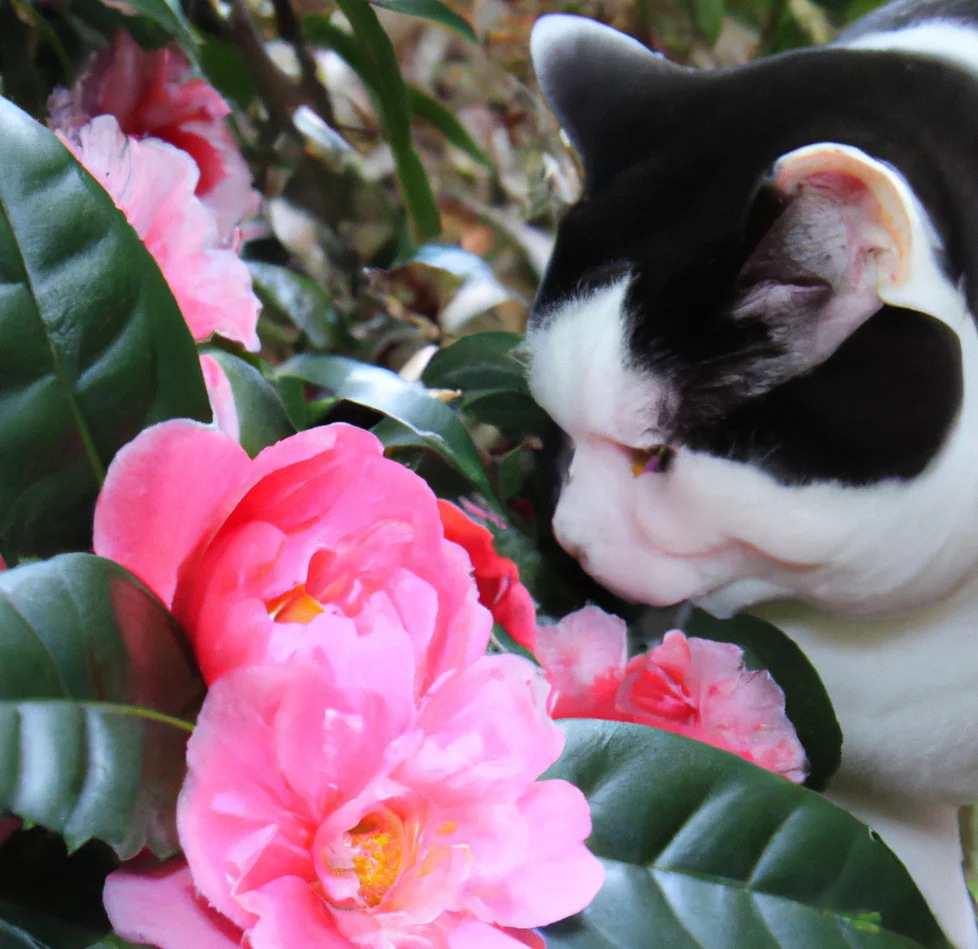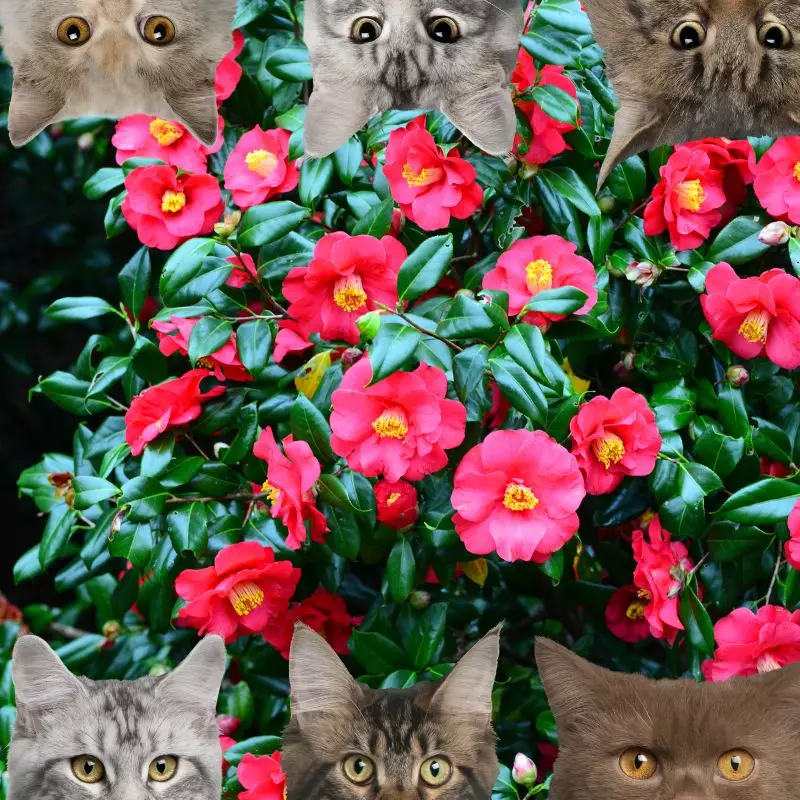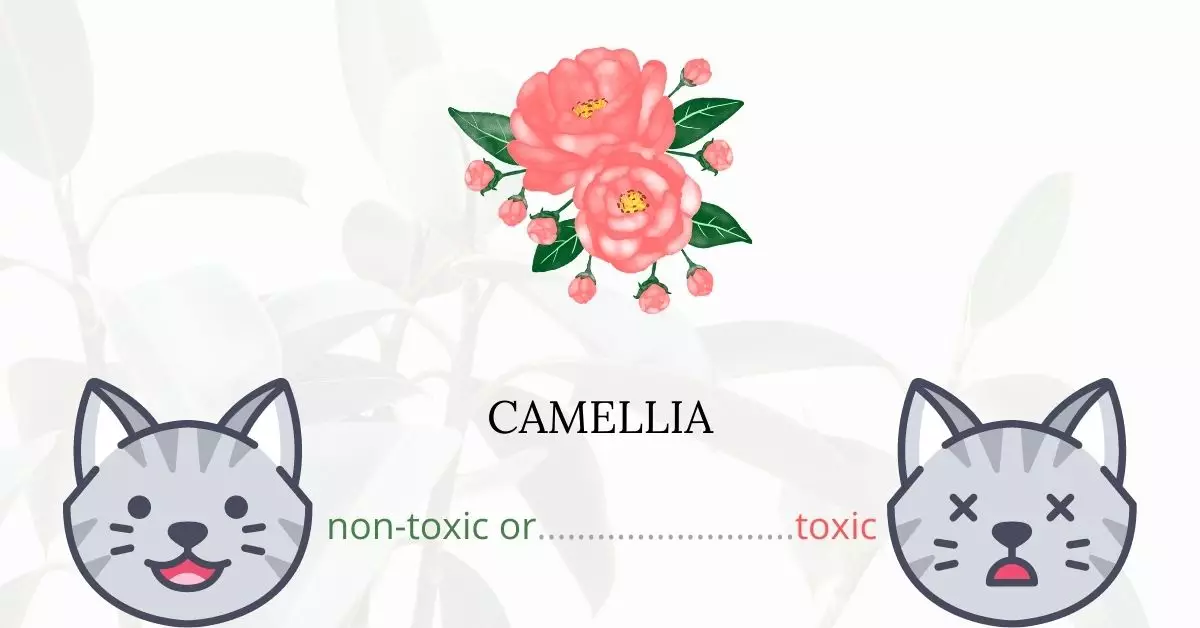Camellias are not toxic for cats and are safe to cultivate or display in homes with feline companions.
This article was developed in collaboration with a team of experienced DVMs (doctors of veterinary medicine). Thanks to their expertise, we present accurate and current insights regarding the potential risks of various plants, with a focus on Camellias, and their effects on cats. In our pursuit of precision, we have also consulted high-authority websites such as ASPCA and PetMD. It’s worth noting that, according to the American Society for the Prevention of Cruelty to Animals (ASPCA), Camellias are also deemed non-toxic for dogs and horses.
Though Camellias offer captivating blooms that might attract your cat, the non-toxic label doesn’t necessarily mean that felines can consume the plant without any repercussions. Dive into this article to uncover the details.
Can Cats Eat Camellia?

Camellias are safe for your cats to consume. If your cat happens to eat a piece of your camellia plant, there is nothing you should worry about. Camellias do not have poisonous substances that can be a hazard to your feline companions.
But this does not imply that you can let your cat eat camellia plants. Ingestion of too much camellia or any other plant may cause cats to feel sick. Indigestion due to large consumption of plants is possible in cats. The primary reason is that cats are carnivorous animals. Carnivores lack adequate enzymes that can properly digest plant matter.
Additionally, you should be wary if your cat has ingested a plant that was grown with the use of commercial fertilizers and pesticides. Chemical residues from these items may cause poisoning in cats.
What is Camellia?

Camellia is a flowering plant from the family Theaceae which has thousands of cultivars. Scientifically known as Camellia japonica, this plant is popular throughout East Asia and is also cultivated in the United States, Europe, and Australia. There are various cultivars of Camellia japonica that produce stunning flowers in different hues.
Camellia is a blooming tree or shrub with purplish-brown branches that become grayish-brown as they mature. They have leathery leaves that are alternately oriented and are dark green on top and whiter on the underside. Camellia blooms have relatively small stalks and emerge along the branches, particularly near the ends. Camellia flowers in the wild usually have six or seven rose or white petals, although cultivars frequently have more petals.
Keeping Cats Away From Camellia

Using deterrents will help in preventing your cat from getting too close and nibbling on our plants. Remember to use natural deterrents. Always read the ingredients of a product before using it on your plants.
You may also use vinegar. Try spraying diluted vinegar on your plants. Vinegar is an ideal deterrent because cats dislike its sour smell and taste.
For potted plants, you may try changing your pots to something that will not resemble a litter box. Some cats tend to think that plant pots are like litter boxes so they tend to mess with them or do their business there.
Most importantly, train your cat to avoid getting near your plants. This may seem a lot of work but once your cat has learned not to go near plants, it will not only him or her but it will also benefit you and your plants.
Plants to Avoid For Your Cats
If you are a cat owner and unsure if the plants growing in your yard are harmful to your cats, check out this list of toxic plants for cats. You can also check our list of non-toxic plants for cats.





